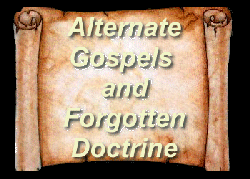
Reincarnation
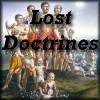
Research Center

$3.99 Kindle eBook
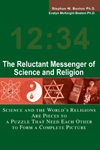
Buy from Amazon.com
Click here for The Reluctant Messenger (Host Site)
Christian Reincarnation
The Arian controversyWhen Arius asked whether the Son had a beginning, he was, in effect, pointing out a fundamental flaw in that doctrine. The doctrine did not clarify the nature of Christ. So he was asking: If there is an abyss between Creator and creation, where does Christ belong? Was he created out of nothing like the rest of the creatures? Or was he part of God? If so, then how and why did he take on human form?
The Church tells us that the Arian controversy was a struggle against blasphemers who said Christ was not God. But the crucial issue in the debate was: How is humanity saved - through emulating Jesus or through worshiping him?
The Arians claimed that Jesus became God's Son and thereby demonstrated a universal principle that all created beings can follow. But the orthodox Church said that he had always been God's Son, was of the same essence as God (and therefore was God) and could not be imitated by mere creatures, who lack God's essence. Salvation could come only by accessing God's grace via the Church.
The Arians believed that human beings could also be adopted as Sons of God by imitating Christ. For the Arians, the incarnation of Christ was designed to show us that we can follow Jesus and become, as Paul said, "joint heirs with Christ."
The orthodox Church, by creating a gulf between Jesus and the rest of us, denied that we could become Sons in the same way he did. The reason why the Church had such a hard time seeing Jesus' humanity was that they could not understand how anyone could be human and divine at the same time. Either Jesus was human (and therefore changeable) or he was divine (and therefore unchangeable).
The orthodox vision of Jesus as God is based in part on a misunderstanding of the Gospel of John. John tells us: "In the beginning was the Word, and the Word was with God, and the Word was God ... All things were made by him; and without him was not any thing made that was made." Later John tells us the "the Word was made flesh and dwelt among us." The orthodox concluded from these passages that Jesus Christ is God, the Word, made flesh.
What they didn't understand was that when John called Jesus "the Word," he was referring to the Greek tradition of the Logos. When John tells us that the Word created everything, he uses the Greek term for Word - "Logos". In Greek thought, Logos describes the part of God that acts in the world. Philo called the Logos "God's Likeness, by whom the whole cosmos was fashioned." Origen called it the soul that holds the universe together.
Philo believed that great human beings like Moses could personify the Logos. Thus, when John writes that Jesus is the Logos, he does not mean that the man Jesus has always been God the Logos. What John is telling us is that Jesus the man became the Logos, the Christ.
Some early theologians believed that everyone has that opportunity. Clement tells us that each human has the "image of the Word [Logos]" within him and that it is for this reason that Genesis says that humanity is made "in the image and likeness of God."
The Logos, then, is the spark of divinity, the seed of Christ, that is within our hearts. Apparently the orthodox either rejected or ignored this concept.
We should understand that Jesus became the Logos just as he became the Christ. But that didn't mean he was the only one who could ever do it. Jesus explained this mystery when he broke the bread at the Last Supper. He took a single loaf, symbolizing the one Logos, the one Christ, and broke it and said, "This is my body, which is broken for you."
He was teaching the disciples that there is one absolute God and one Universal Christ, or Logos, but that the body of that Universal Christ can be broken and each piece will still retain all the qualities of the whole. He was telling them that the seed of Christ was within them, that he had come to quicken it and that the Christ was not diminished no matter how many times his body was broken. The smallest fragment of God, Logos, or Christ, contains the entire nature of Christ's divinity - which, to this day, he would make our own.
The orthodox misunderstood Jesus' teaching because they were unable to accept the reality that each human being has both a human and a divine nature and the potential to become wholly divine. They didn't understand the human and the divine in Jesus and therefore they could not understand the human and the divine within themselves. Having seen the weakness of human nature, they thought they had to deny the divine nature that occasionally flashes forth even in the lowliest of human beings.
The Church did not understand (or could not admit) that Jesus came to demonstrate the process by which the human nature is transformed into the divine. But Origen had found it easy to explain.
He believed that the human and divine natures can be woven together day by day. He tells us that in Jesus "the divine and human nature began to interpenetrate in such a way that the human nature, by its communion with the divine, would itself become divine." Origen tells us that the option for the transformation of humanity into divinity is available not just for Jesus but for "all who take up in faith the life which Jesus taught."
Origen did not hesitate to describe the relationship of human beings to the Son. He believed that we contain the same essence as the Father and the Son: "We, therefore, having been made according to the image, have the Son, the original, as the truth of the noble qualities that are within us. And what we are to the Son, such is the Son to the Father, who is the truth." Since we have the noble qualities of the Son within us, we can undergo the process of divinization.
To the Arians, the divinization process was essential to salvation; to the orthodox, it was heresy. In 324, the Roman emperor Constantine, who had embraced Christianity twelve years earlier, entered the Arian controversy. He wrote a letter to Arius and Bishop Alexander urging them to reconcile their differences, and he sent Bishop Hosius of Cordova to Alexandria to deliver it. But his letter could not calm the storm that raged over the nature of God - and man. Constantine realized that he would have to do more if he wanted to resolve the impasse.
| Reincarnation index | Next |

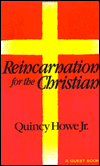
Quincy Howe Jr.
Reincarnation: The Missing Link in Christianity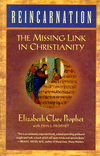
Elizabeth Clare Prophet
Reincarnation in Christianity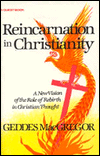
A New Vision of the Role of Rebirth in Christian Thought